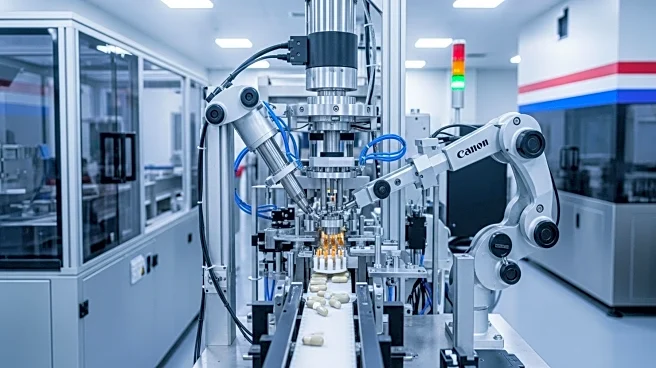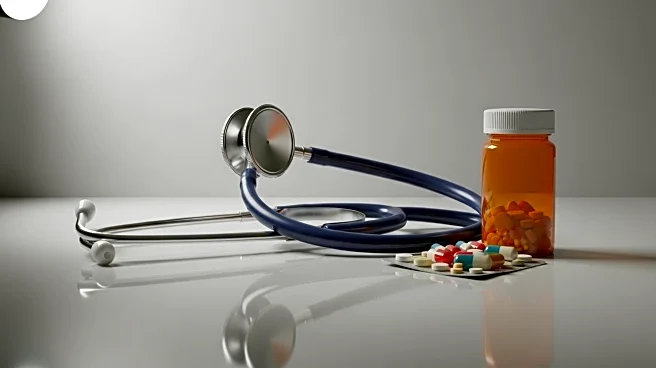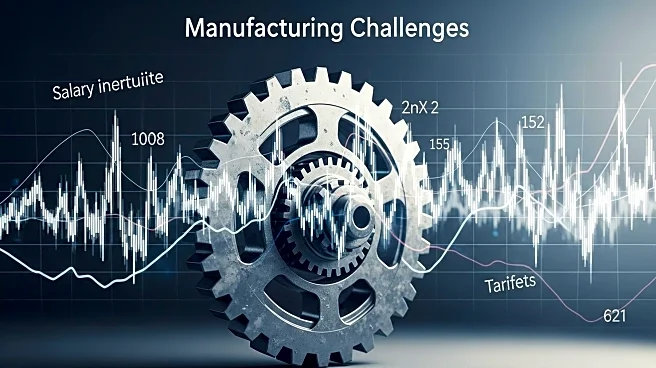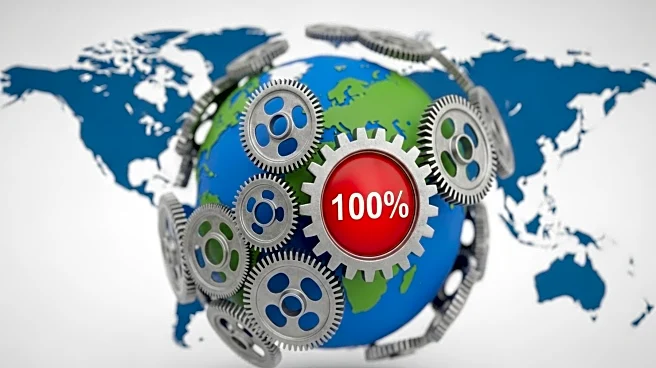What is the story about?
What's Happening?
Johnson & Johnson CEO Joaquin Duato has expressed optimism about the future of pharmaceutical innovation in the U.S., despite recent challenges posed by the Trump administration. In an interview, Duato highlighted the company's commitment to investing over $55 billion in building new manufacturing plants in the U.S., including a factory in North Carolina. This investment aims to bolster the company's presence in the country and create jobs in robotics, cell therapy, and biologics. Duato's comments come in the wake of President Trump's announcement of a 100% tariff on imported branded or patented pharmaceutical products, which will take effect on October 1. The tariffs are part of a broader strategy to encourage domestic drug manufacturing.
Why It's Important?
The pharmaceutical industry is a critical component of the U.S. economy, driving innovation and providing essential healthcare products. Johnson & Johnson's investment in U.S. manufacturing reflects a strategic move to mitigate the impact of tariffs and maintain its leadership in healthcare innovation. The tariffs could increase costs for imported drugs, potentially affecting prices and availability for consumers. By expanding domestic production, Johnson & Johnson aims to secure its supply chain and contribute to job creation in the U.S. The company's efforts underscore the importance of maintaining a robust domestic pharmaceutical industry, which is vital for economic growth and public health.
Beyond the Headlines
The imposition of tariffs on imported pharmaceuticals raises questions about the balance between protectionist policies and global trade dynamics. While the tariffs aim to boost domestic manufacturing, they may also lead to increased drug prices and potential trade tensions with countries exporting pharmaceuticals to the U.S. Additionally, the Trump administration's unproven claims linking autism to acetaminophen use during pregnancy could influence public perception and regulatory scrutiny of pharmaceutical products. These developments highlight the complex interplay between government policy, industry innovation, and public health outcomes.
AI Generated Content
Do you find this article useful?













